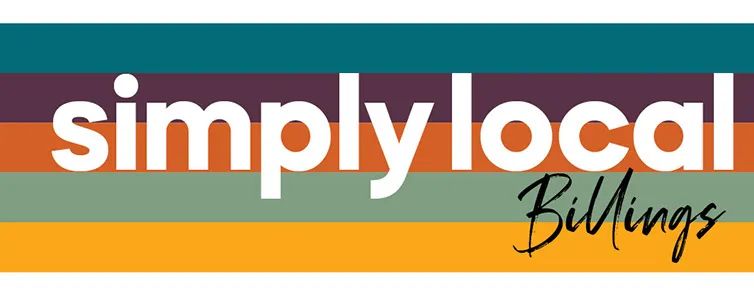
Breaking the Silence Preventing Teen Suicide Starts with Us
September 2025
Article by Maria Weidich
In 2023, one in five high school students seriously considered suicide, and Montana’s youth suicide rate is nearly three times the national average. This heartbreaking reality highlights a growing crisis in our community. Behind each statistic is a teen quietly struggling with mental health challenges, bullying, identity issues, or academic pressure.
Observed each September, Suicide Prevention Month encourages awareness, open conversations, and action. In Montana, the call for early intervention, connection, and compassion is more urgent than ever.
THE RISING TIDE OF TEEN STRUGGLES
State Senator Mike Yakawich, a lifelong Montanan and 26-year advocate in suicide prevention, believes addressing youth suicide requires a cultural shift. As a member of the Suicide Prevention Coalition of Yellowstone Valley, he emphasizes that rising rates are not caused by one factor, but by a complex mix of personal vulnerabilities and social, psychological, cultural, and technological influences.
- Rising mental health challenges
- Poor behavioral health
- Family breakdown
- Social media pressure
- Academic and performance pressure
- Easy access to drugs, alcohol and weapons
- Isolation and loneliness
- Identity struggles and discrimination
- Stigma and lack of support
RECOGNIZING THE RISKS AND RED FLAGS
Recognizing these conditions, behaviors, and cues are warning signs that, if recognized early, can help parents and caregivers intervene before a crisis escalates.
- Threats of suicide
- Depression, anxiety disorders, and post-traumatic stress disorder
- Increased irritability or anger
- Decreased interest in sports, hobbies, and school
- Sudden change in appetite or appearance
- Making final arrangements, like giving away prized possessions or saying goodbye to family and friends
HOW TO SHOW UP WHEN IT MATTERS MOST
For teens navigating identity, academic pressure, social changes, or trauma, the risk factors of suicide can feel overwhelming. Protecting a teen from suicide risk starts with connection, awareness, and proactive support. There are many evidence- based steps parents and caregivers can take to reduce the risk and create a safety net for their child.
- Check in with your teen regularly, beyond day-to-day tasks
- Build open and trusting communication
- Learn to recognize the warning signs
- Create a safe home environment, removing lethal means
- Prioritize mental health just as you would physical health
- Support their social, emotional and spiritual world
- Stay involved, even if they pull away
- Build a broader support system
- Model healthy habits yourself
BREAKING THE SILENCE
Talking to your teen about suicide can be difficult, but it’s one of the most important steps a parent can take. Many teens stay silent out of fear or shame, but early conversations can lead to hope and healing. “It’s okay for parents to ask if they’re having thoughts of taking their life,” Mike said. “It does not induce suicide; it actually reduces it.” While the topic may feel uncomfortable, avoiding it poses a greater risk.
- Stay calm and be present
- Start a direct conversation
- Listen without judgment
- Validate their feelings
- Ask open-ended questions
- Resist the urge to offer quick fixes or solutions
- Remove immediate dangers
- Seek professional help immediately
ACTING WITH EMPATHY AND URGENCY
Taking action after a teen discloses suicidal thoughts can feel overwhelming, but every step parents take toward safety, support, and healing is an act of love that can truly save their life. In a crisis situation, call 988 for the 988 Suicide and Crisis Lifeline or 911 for situations when self-harm is occurring or about to occur.
- Find treatment and support
- Schedule a mental health evaluation
- Involve the teen’s school if appropriate
- Begin a therapy plan
- Stay consistently involved
- Take care of yourself, too
CRISIS RESOURCES TO KEEP ON HAND
- 988 Suicide & Crisis Lifeline: Call or text 988
- Crisis Text Line: Text HOME to 741741
- The Trevor Project (LGBTQ+ Youth): 1-866-488-7386 or text START to 678678
- Community Crisis Center: (406) 259-8800
Suicide prevention extends beyond September; it’s something we must prioritize every day. With open conversations, early support, and a connected community, we can help teens navigate their most challenging moments. “Help is there, and you don’t always need to go to a professional,” Mike added. A caring teacher, coach, or spiritual leader can also make a powerful impact. Let teens know they’re loved, valued, and never alone. You don’t need to have all the answers; simply listening and showing up can be life-changing.
OUT OF THE DARKNESS COMMUNITY WALKS
Date: Sunday, September 21 Time: Check In: 12:30pm | Event Start:
2:00pm
Location: Will James Middle School, Billings, MT
For more information, contact yvootdwalk@gmail.com.
Taking place in hundreds of cities nationwide, Out of the Darkness is a no-cost community walk raising awareness and much-needed funds for suicide prevention while strongly sending the message that no one is alone. Families, friends, neighbors, and co-workers walk side by side, supporting each other in memory of those lost to the silent epidemic.
SUICIDE PREVENTION CONFERENCE
Date: Friday, September 26 Time: 8:30am-3:30pm Location: Mansfield Center,
Intermountain Health, Billings, MT For more information, visit spcoalitionyv.org.
Hosted by the Suicide Prevention Coalition of Yellowstone Valley, the annual Suicide Prevention Conference unites individuals, educators, organizations, and communities to share knowledge and foster a dialogue about suicide prevention. “It’s a wonderful opportunity to learn about suicide prevention and areas of intervention,”
Originally printed in the September 2025 issue of Simply Local Magazine
Check this article out in the digital issue of Simply Local here!





